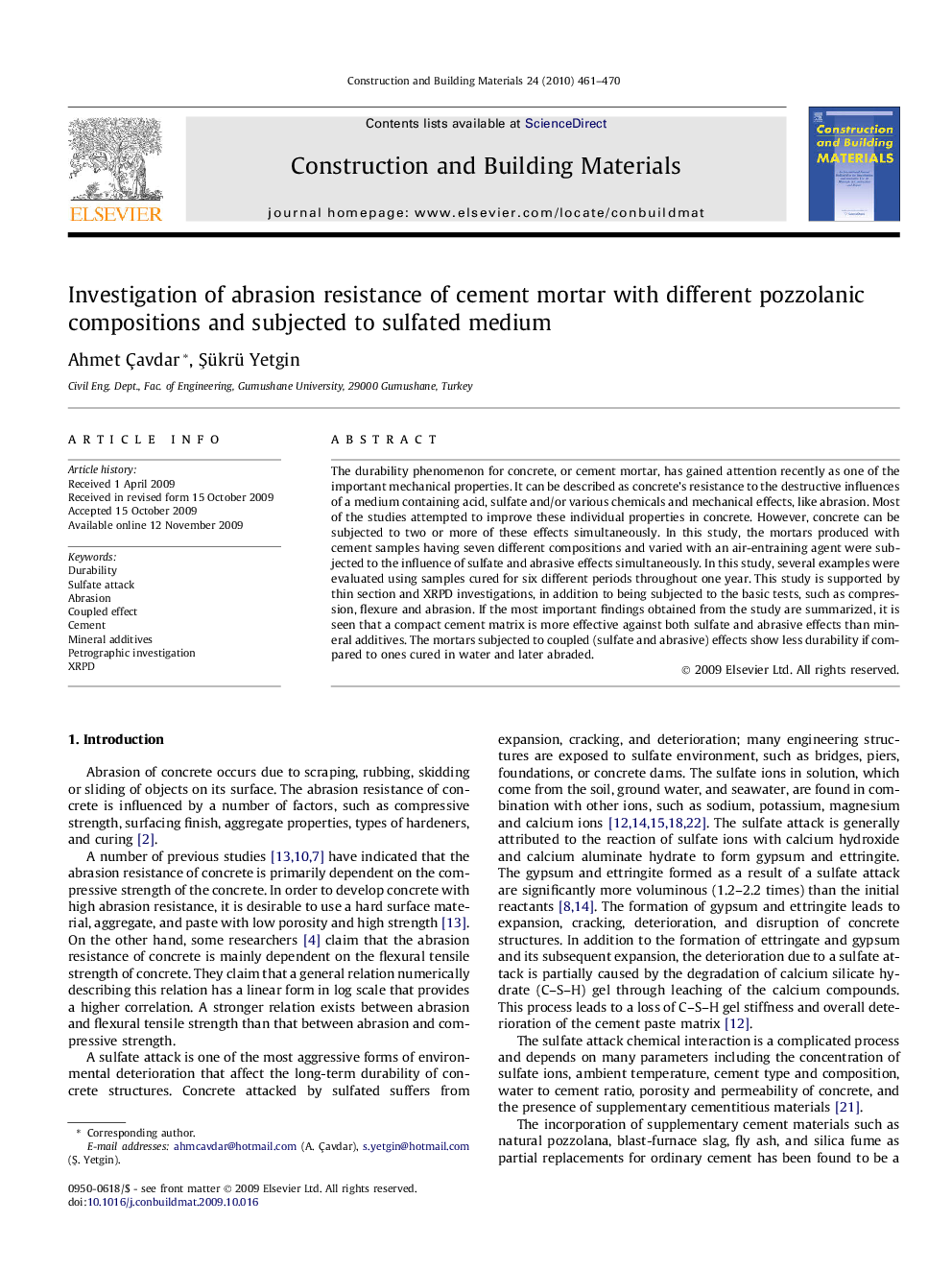| Article ID | Journal | Published Year | Pages | File Type |
|---|---|---|---|---|
| 260488 | Construction and Building Materials | 2010 | 10 Pages |
The durability phenomenon for concrete, or cement mortar, has gained attention recently as one of the important mechanical properties. It can be described as concrete’s resistance to the destructive influences of a medium containing acid, sulfate and/or various chemicals and mechanical effects, like abrasion. Most of the studies attempted to improve these individual properties in concrete. However, concrete can be subjected to two or more of these effects simultaneously. In this study, the mortars produced with cement samples having seven different compositions and varied with an air-entraining agent were subjected to the influence of sulfate and abrasive effects simultaneously. In this study, several examples were evaluated using samples cured for six different periods throughout one year. This study is supported by thin section and XRPD investigations, in addition to being subjected to the basic tests, such as compression, flexure and abrasion. If the most important findings obtained from the study are summarized, it is seen that a compact cement matrix is more effective against both sulfate and abrasive effects than mineral additives. The mortars subjected to coupled (sulfate and abrasive) effects show less durability if compared to ones cured in water and later abraded.
